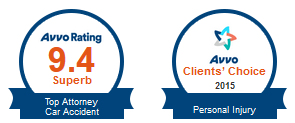Auto Accident Lawyer
When they are responding to a real crisis, law enforcement and other emergency responders have a lot of leeway. They can do whatever is necessary to reach the scene of the emergency as quickly as they can. Most of the time, this is a good thing; when we want help, we want it right away. As a result, emergency vehicles can disregard speed limit signs, run red lights and stop signs, and drive against the flow of traffic. It’s not uncommon to see a patrol car or fire truck weaving the wrong way through streets in large cities.
How is this legal? An emergency vehicle’s lights and sirens are acting in place of other traffic signals. As an attorney, like an auto accident lawyer, can explain, it’s as if the vehicle itself is a new set of traffic rules and all the other drivers have to get out of the way. In fact, other drivers who fail to get out of the path of an emergency vehicle can be ticketed for failing to obey traffic rules, even if their driving was otherwise safe. Drivers must follow the “signals” created by the lights and sirens of the emergency vehicle.
Although emergency vehicle drivers are trained to proceed with caution and drive with high levels of skill, accidents still happen. Sometimes the accidents are caused by a careless civilian who ignores the sirens and lights; other times they are the result of negligence on the part of the emergency driver. Injuries in these cases are often much greater than injuries in ordinary accidents. Emergency vehicles can run lights and drive against the flow of traffic, making t-bone and head-on collisions more likely, with correspondingly higher rates of speed. And while a patrol car may not be any larger than the average passenger vehicle, fire engines and ambulances are much larger and heavier, making impacts with passenger vehicles devastating. The victims of an emergency-vehicle accident can suffer lifelong injuries.
After the smoke clears and the parties have received initial medical evaluation, they may be left wondering where to turn. Is it possible to sue the police? Is that even a good idea? What do they need to do?
Many people assume that if they were t-boned by an emergency vehicle in an intersection, the emergency driver is at fault. Unfortunately, that’s rarely the case. Anyone who enters the path of an emergency vehicle while it is responding to a true emergency is automatically “at fault” in an accident, because an emergency vehicle always has the right of way while responding to a crisis.
Even though police cruisers and other emergency response vehicles carry liability insurance just like any other cars on the road, these policies will only pay in cases of actual negligence. However, there may still be opportunities to recover for injuries. An expert car accident attorney will be able to obtain information to show whether a police cruiser was actually responding to an emergency or just trying to get somewhere faster than it should have been. They will also be able to identify whether the accident could have been caused by a third party, making the third party responsible.



